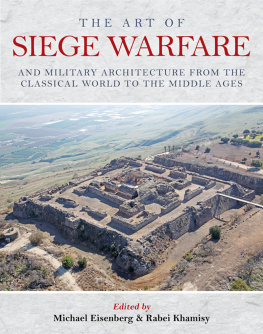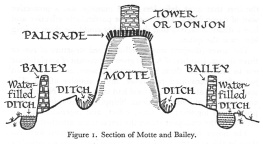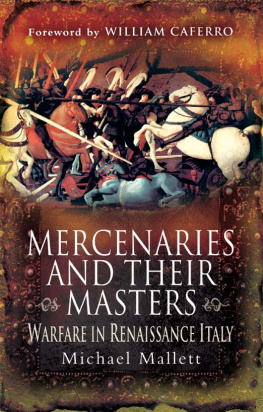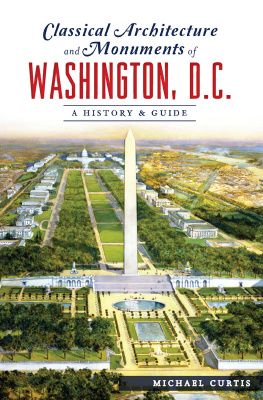Michael Eisenberg - The Art of Siege Warfare and Military Architecture From the Classical World to the Middle Ages
Here you can read online Michael Eisenberg - The Art of Siege Warfare and Military Architecture From the Classical World to the Middle Ages full text of the book (entire story) in english for free. Download pdf and epub, get meaning, cover and reviews about this ebook. year: 2021, publisher: Casemate Publishers & Book Distributors, LLC, genre: Children. Description of the work, (preface) as well as reviews are available. Best literature library LitArk.com created for fans of good reading and offers a wide selection of genres:
Romance novel
Science fiction
Adventure
Detective
Science
History
Home and family
Prose
Art
Politics
Computer
Non-fiction
Religion
Business
Children
Humor
Choose a favorite category and find really read worthwhile books. Enjoy immersion in the world of imagination, feel the emotions of the characters or learn something new for yourself, make an fascinating discovery.
- Book:The Art of Siege Warfare and Military Architecture From the Classical World to the Middle Ages
- Author:
- Publisher:Casemate Publishers & Book Distributors, LLC
- Genre:
- Year:2021
- Rating:3 / 5
- Favourites:Add to favourites
- Your mark:
- 60
- 1
- 2
- 3
- 4
- 5
The Art of Siege Warfare and Military Architecture From the Classical World to the Middle Ages: summary, description and annotation
We offer to read an annotation, description, summary or preface (depends on what the author of the book "The Art of Siege Warfare and Military Architecture From the Classical World to the Middle Ages" wrote himself). If you haven't found the necessary information about the book — write in the comments, we will try to find it.
Michael Eisenberg: author's other books
Who wrote The Art of Siege Warfare and Military Architecture From the Classical World to the Middle Ages? Find out the surname, the name of the author of the book and a list of all author's works by series.
The Art of Siege Warfare and Military Architecture From the Classical World to the Middle Ages — read online for free the complete book (whole text) full work
Below is the text of the book, divided by pages. System saving the place of the last page read, allows you to conveniently read the book "The Art of Siege Warfare and Military Architecture From the Classical World to the Middle Ages" online for free, without having to search again every time where you left off. Put a bookmark, and you can go to the page where you finished reading at any time.
Font size:
Interval:
Bookmark:

THE ART OF SIEGE WARFARE AND MILITARY ARCHITECTURE FROM THE CLASSICAL WORLD TO THE MIDDLE AGES
Edited by
MICHAEL EISENBERG AND RABEI KHAMISY
Scientific Editorial
DENYS PRINGLE, WERNER ECK AND ADRIAN BOAS

Published in the United Kingdom in 2021 by
OXBOW BOOKS
The Old Music Hall, 106108 Cowley Road, Oxford, OX4 1JE
and in the United States by
OXBOW BOOKS
1950 Lawrence Road, Havertown, PA 19083
Oxbow Books and the individual contributors 2021
Hardback Edition: ISBN 978-1-78925-406-8
Digital Edition: ISBN 978-1-78925-407-5 (epub)
Digital Edition: ISBN 9781789254082 (kindle)
A CIP record for this book is available from the British Library
Library of Congress Control Number: 2020947356
All rights reserved. No part of this book may be reproduced or transmitted in any form or by any means, electronic or mechanical including photocopying, recording or by any information storage and retrieval system, without permission from the publisher in writing.
For a complete list of Oxbow titles, please contact:
UNITED KINGDOM
Oxbow Books
Telephone (01865) 241249
Email:
www.oxbowbooks.com
UNITED STATES OF AMERICA
Oxbow Books
Telephone (610) 853-9131, Fax (610) 853-9146
Email:
www.casemateacademic.com/oxbow
Oxbow Books is part of the Casemate Group
Front cover: Belvoir Castle, Israel (aerial photo. M. Eisenberg)
Back cover: Qalat al-Subeiba (Nimrod Fortress), Israel (photo. M. Eisenberg)
U ZI A D
Israel Antiquities Authority, Israel
S ARAH A RENSON
Caesarea, Israel
A LEXANDER B ARANOV
Free University of Berlin, Germany
H ERV B ARB
Service rgional de larchologie, Direction rgionale des affaires culturelles, Orlans Cedex, France
C HAIM B EN -D AVID
Kinneret College, Israel
A YE D ALYANCI -B ERNS
Technical University of Berlin, Germany
G WYN D AVIES
Florida International University, USA
T OMASZ D ZIURDZIK
Institute of Archaeology, University of Warsaw, Poland
M ICHAEL E ISENBERG
The Zinman Institue of Archaeology, University of Haifa, Israel
W ERNER E CK
Universitt zu Kln, Historisches Institut Alte Geschichte, Germany
S VEN E KDAHL
University of Gothenburg, Sweden
E HUD G ALILI
The Zinman Institue of Archaeology, University of Haifa, Israel
P ETER G ENDELMAN
Israel Antiquities Authority, Israel
B RITA J ANSEN
Bremen, Germany
C HANG -H O J I
La Sierra University, USA
J OHN D. H OSLER
U.S. Army Command & General Staff College, USA
M ELANIE J ONASCH
Deutsches Archologisches Institut, Berlin
R ABEI K HAMISY
The Zinman Institue of Archaeology, University of Haifa, Israel
I LGIN K LEKI
Istanbul Technical University, Turkey
D ANIT L EVI
Israel Antiquities Authority, Israel
U TE L OHNER -U RBAN
Institut fr Archologie, Karl-Franzens-Universitt Graz, Austria
A NNA M ECH
Institute of Archaeology, University of Warsaw, Poland
J EAN M ESQUI
University of Poitiers, France
S ILKE M TH
National Museum of Denmark, Copenhagen
I OANNIS N AKAS
Athens, Greece
A DAM P AOUT
The Zinman Institute of Archaeology, University of Haifa, Israel
E LKE R ICHTER
Brandenburgisch Technische Universitt
Cottbus-Senftenberg, Germany
A LINOR R UFIN S OLAS
Universit Paris, France
T URGUT S ANER
Istanbul Technical University, Turkey
V ARDIT S HOTTEN -H ALLEL
Israel Antiquities Authority, Israel
V ASSILIKI G. S TAMATOPOULOU
Ministry of Culture, Ephorate of Antiquities of Thessaloniki City and Aristotle University of Thessaloniki, Greece
I TAMAR T AXEL
Israel Antiquities Authority, Israel
S HLOMIT W EKSLER -B DOLAH
Israel Antiquities Authority, Israel
C LAUDIA W INTERSTEIN
Deutsches Archologisches Institut, Berlin, Germany
The art of siege warfare and military architecture, that is to say poliorcetics in its widest sense, was always a part of Greek, and later Latin, historiography. The size and strength of the protective walls of the polis were just as vital for its security and the pride of its citizens as the heroic acts of its warriors in life and death on the battlefield. In the Classical period, the growing importance of cities as centres of culture, power and stability intensified the race in poliorcetics fortifications became more complex, while new and more ingenious ways of overcoming them were invented. In the Classical period, the main expense of the public treasury on towns and cities was devoted to military defences and temples. Until Imperial times, urban fortifications represented an expression of military prestige and political power, besides defining the civic and religious boundary of every city. During the Imperial times, the focus shifted from city walls to strengthening the military units and organizing their deployment along the borders of the Empire. The Pax Romana brought an unfamiliar phenomenon unfortified city foundations; however, the peace was neither global nor everlasting. By the 4th century CE, unfortified cities found it necessary to build walls. This military focus continued through the Byzantine and Early Islamic periods, when many cities, finding it impossible to maintain the size of their earlier fortifications, were forced to abandon them in favour of smaller urban citadels, sometimes located on the site of an earlier acropolis. The harsh military reality of the Early Middle Ages brought a new wave of investment and innovation in the military architecture of cities and citadels. The development of larger siege weapons and machines after about half a millennium of technological stagnation forced townsfolk to apply new techniques to the design of their urban defences, some of them relearned from surviving classical texts. The new city walls had to be built not only to withstand newly developed stone-throwing engines, rams, mining techniques and incendiary devices such as Greek fire, but also to incorporate strategies designed to keep would-be attackers as far as possible from the main walls themselves.
Five main stages characterize the development of poliorcetics from the Classical period to the Late Middle Ages:
Before 398 BCE: period before the invention of siege machinery and projectiles.
398 BCE to Late Roman: the development of siege machinery, including mobile siege towers ( helepoleis ), battering rams, torsion artillery and new urban military architecture.
Late Roman to Early Medieval: period of stagnation in the development of sieging and projectile machinery.
Early to Late Medieval: development of new heavy projectiles and sophisticated siege techniques, together with political and demographic changes that forced rebuilding of fortifications.
Late Medieval: the invention and adaptation of gunpowder, the beginning of a new era in military development.
At first glance, the long chronological spectrum of this book, from the Classical period to the Late Middle Ages, may seem too broad a period to permit the development of a consistent methodology and terminology, yet this is exactly the supposed barrier that we, the editors, wish to show is largely imaginary. This idea was born during a spontaneous debate that we had about terminology. While our research specialisms relate respectively to the classical and medieval worlds, we realized, and agreed, that although some of the terminology used in and applied to the different periods was different, the concepts and arguments employed by scholars investigating them have mutual ground. This idea became the thread running through the conference that we organized in Haifa, Israel, in February 2017. We wished to combine presentations and debates between scholars working on the study of poliorcetics in two historical periods that are usually treated separately. The conference, titled The Art of Siege Warfare and Military Architecture from the Classical World to the Middle Ages: An International Conference for the Study of Poliorcetics, Military Historiography and the Archaeology of Battlefields , gathered some of the fields leading experts as well as emerging scholars, who all contributed to the fruitful discussions, and not less importantly, to the friendly atmosphere.
Font size:
Interval:
Bookmark:
Similar books «The Art of Siege Warfare and Military Architecture From the Classical World to the Middle Ages»
Look at similar books to The Art of Siege Warfare and Military Architecture From the Classical World to the Middle Ages. We have selected literature similar in name and meaning in the hope of providing readers with more options to find new, interesting, not yet read works.
Discussion, reviews of the book The Art of Siege Warfare and Military Architecture From the Classical World to the Middle Ages and just readers' own opinions. Leave your comments, write what you think about the work, its meaning or the main characters. Specify what exactly you liked and what you didn't like, and why you think so.







